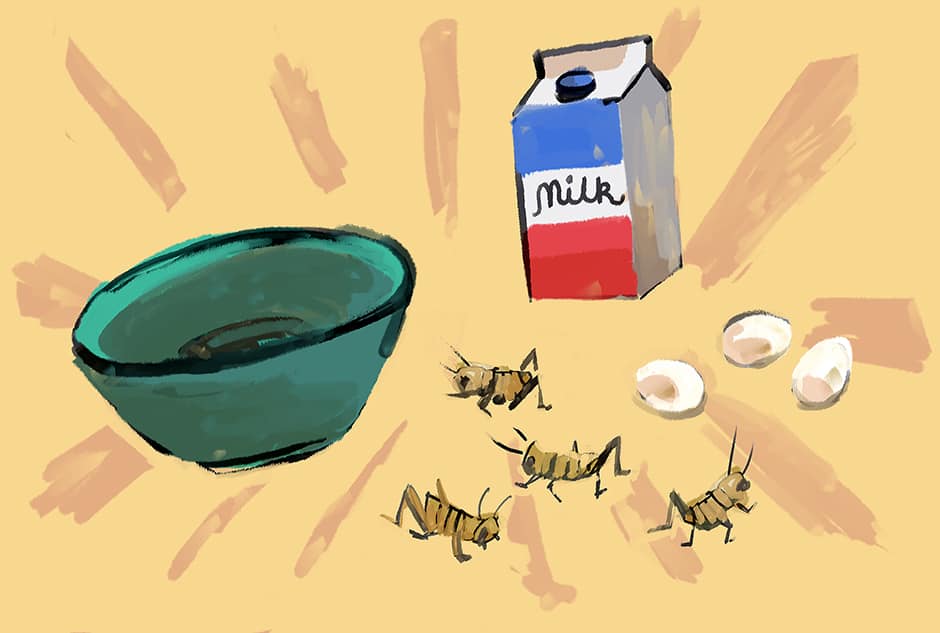The persuasive power of free food was evident as students lined up to sample cricket confections at EcoFest last Wednesday.
“It’s surprisingly, surprisingly good. Like you really can’t taste the difference,” said life sciences student Andrew Hart in between bites of a cricket flour brownie.
Cricket flour cookies and crackers topped with cricket hummus and roasted mealworms were also available courtesy of Bug Bites, a brand new U of T club promoting entomophagy — the practice of eating insects.
Bug Bites encourages students to eat insects “because they’re very environmentally friendly,” says co-founder Daniel Jubas-Malz, a psychology student.
Compared to traditional livestock, insect rearing has a smaller ecological footprint — it emits fewer greenhouse gases and less ammonia, and it requires less land clearing and less water. Insects also reproduce much faster.
Pharmacy student Monika Stalmach cited environmental concerns as her primary motivation for considering entomophagy. She referred to a 2013 report by the UN Food and Agriculture Organization, which says that crickets are 12 times more efficient than cattle at converting feed into protein.
Insects may become an important food source in the future, says Jubas-Malz. The human population is expected to exceed nine billion by 2050, and “we need enough food to feed everyone, so we really need to start expanding what we’re comfortable eating,” he says.
Insect consumption is not commonplace in Western society, but Bug Bites seeks to overcome the taboos associated with entomophagy. The organization is an extension of an environmental psychology course project investigating the barriers to launching a successful environmental campaign.
They identified the “disgust factor” as the biggest obstacle for entomophagy.
Westerners may have an aversion to eating insects, but at least two billion people around the world include insects in their diet.
Bug Bites cites the current popularity of sushi as proof that food culture in North America can change and expand. It was not until the 1970s that raw fish began to transition from taboo into the widely enjoyed delicacy that it is in Toronto today.
For many people, environmental concerns won’t be enough to overcome the disgust factor. The nutritional benefits of eating insects provide additional incentive to adopt entomophagy.
Insects are a great source of protein, calcium, iron, and zinc. “[I]t would definitely be much harder to actually support [entomophagy] if there wasn’t the health benefits, so that’s a huge part of our campaign,” explains Jubas-Malz.
The second largest obstacle for entomophagy is the accessibility factor, says Jubas-Malz.
As much as he enjoyed his cricket brownie, Hart said accessibility is the greatest obstacle to incorporating insects in his diet. “It’s just kind of hard to find where you can buy bugs downtown,” agreed Stalmach.
Bug Bites gets its cricket flour from Next Millennium Farms, an insect farm in Ontario.
Entomophagy as a sustainable dietary practice is a growing movement in North America, and Bug Bites hopes that U of T students will take part — but first, they will have to stop squirming.


